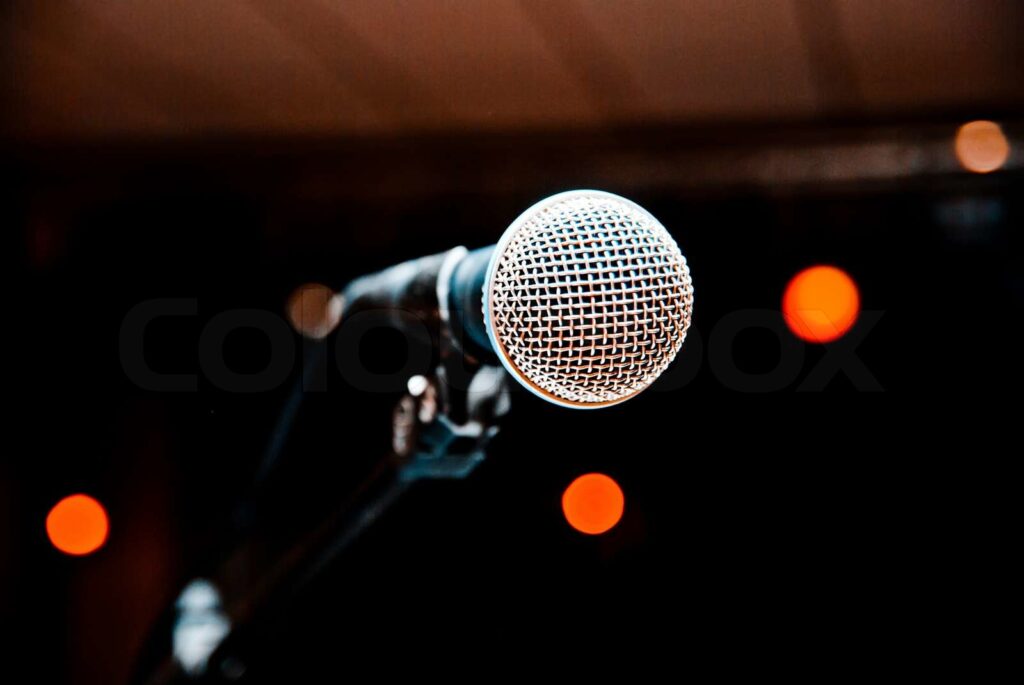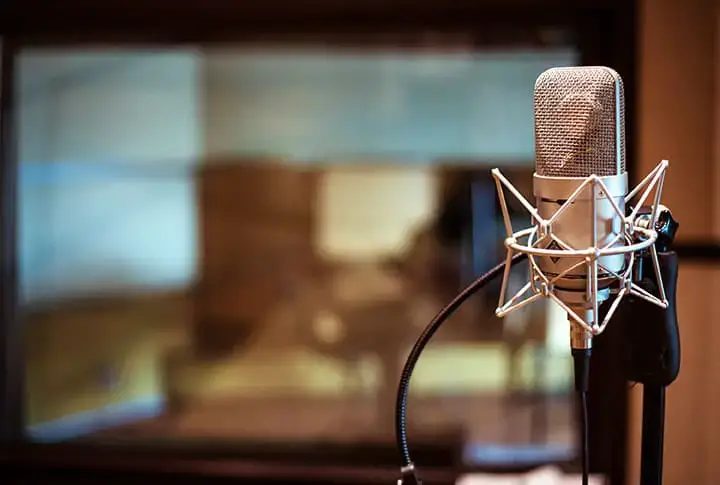Welcome to the world of microphones! Ever wondered whether a microphone is more of a talker or a listener in the tech world? Well, let’s break it down.
However, a microphone is an input device. It takes in external sound (your voice, music, etc.) and converts it into electrical signals that the computer can understand. So, when you use it, you’re inputting information into the computer.
So, buckle up as you explore this cool world where your voice and technology team up to make things happen.
Input Devices in Simple Terms
| Device | Description |
| Keyboard | Like a typewriter, lets you type stuff. |
| Mouse | Moves a little arrow on the screen, has buttons for clicking. |
| Joystick | Stick with a ball at the end, good for games and moving stuff around. |
| Light Pen | A pen for the computer screen, helps pick things or draw. |
| Track Ball | Like a mouse but with a ball on top, great for laptops. |
| Scanner | Copies pictures or documents onto the computer. |
| Digitizer | Turns drawings or camera signals into computer-friendly numbers. |
| Graphic Tablet | A special pad for drawing on the computer. |
| Microphone | Records sound, useful for adding voices to videos or making music. |
| Magnetic Ink Card Reader | Reads special ink on bank cheques, making processing faster. |
| OCR (Optical Character Reader) | Reads printed text for the computer. |
| Bar Code Reader | Scans those black-and-white lines on products, helps with tracking and sales. |
| OMR (Optical Mark Reader) | Reads marks made with a pen or pencil, handy for multiple-choice exams. |
What is a Microphone?

A microphone is a cool gadget that turns sounds into electric waves. Emile Berliner made the first one in 1877! You can stick it into computers and stuff.
Why have a mic on your computer?
Well, for lots of fun stuff! You can record your voice, make your computer understand what you say, jam with musical instruments, chat online, do gaming, and even record singing or podcasts. It’s like a magic ear for your computer!
What is an audio input device?
An audio input device for a computer is something that sends sound or instructions into the computer. A common example is a microphone. They take the sounds around them and turn them into signals that the computer can understand. However, these signals are usually in a form called analog, and computers like digital signals.
So, there’s a step where the microphone’s signals are changed into digital data. This can happen through a device called an audio interface, which can be like a hub or an adapter. Or, some are digital themselves, meaning they do this conversion inside it before sending the signal to the computer.
In either case, when you think about a microphone and a computer, the microphone is an input device, but it needs a little help to make its signals work with the computer.
What is an audio output device?
Simply put audio output devices are the ones that let us hear sounds from our devices. This includes things like speakers and headphones. These devices take digital audio signals, like music or a podcast, and turn them into the sounds we can hear.
Also, when you’re thinking about whether a device is for input or output, just consider if it’s bringing sound in, like a microphone does, or sending sound out, like speakers and headphones do. If it’s sending out sound, it’s an output device.
Exploring Microphones: Your Sound Sidekicks
Microphones are like little helpers for sound, and they come in all sorts of shapes and sizes.
- Dynamic Microphones:
- Simple and robust design.
- Commonly used for live performances.
- Captures sound through a moving coil and magnetic diaphragm.
- Condenser Microphones:
- Requires external power (phantom power) for operation.
- Provides a natural sound, especially at higher frequencies.
- Often found in USB microphones, which connect directly to computers.
- Ribbon Microphones:
- A type of dynamic microphone.
- Uses a thin conducting ribbon between magnet poles.
- Captures sound from the front and rear, not the sides.
- Offers good high-frequency response without needing external power.
- Digital Microphones:
- Converts analog sound waves to digital within the microphone.
- Delivers higher-definition audio.
- Ideal for achieving superior sound quality.
The Dynamic Duo: Input and Output Devices in Action
Input and output devices are like best buddies they work together to make things happen.
Imagine a recording microphone, the input hero. It listens to what you say and sends that data to the computer. But wait, the computer alone won’t help. Here comes the output hero, like a screen or speaker, to show or play what you just recorded.
Here’s the scoop on the main differences:
- Input Devices:
- You control them to get data.
- They’re like the listeners, taking in info from you.
- Example: A recording microphone capturing your voice.
- Output Devices:
- Connected to a computer, controlled by it.
- They show or play info in a way you understand.
- Example: A screen displaying a video or a speaker playing a recorded message.
Now, let’s see these two in action. Say you record a birthday message using a camera with a microphone. The camera, the input star, grabs the video and audio. Then, it sends the audio to the computer. Here’s where the output hero comes in, turning that audio into something you can hear and understand.
It’s like a team input and output devices working together to make sure you can record, play, and enjoy all sorts of cool stuff. They’re the dynamic duo of the tech world.
Different Parts of a Microphone
| Microphone Part | Function |
| Wind Screen | Blocks wind and unwanted noise during recording. |
| Diaphragm | Vibrates with sound waves, converting them into electric signals. |
| Magnetic Core | Exclusive to dynamic mics, creates a magnetic field for the coil. |
| Coil | Unique to dynamic mics, vibrates with the diaphragm to generate electric energy. |
| Capsule | Transforms sound vibrations into electric signals, some mics need it. |
| Body | Outer structure of the microphone, affects sound quality and durability. |
| Output | Connection point for cables (usually XLR), sends the audio signal. |
How does a microphone work?

When you talk into a microphone, something cool happens. Inside, there’s a super-thin plastic diaphragm. When you speak, sound waves make the diaphragm move.
Moreover, connected to the diaphragm is a coil, and there’s a magnet making a magnetic field. As the coil moves in this field, it creates an electric current. This electric current travels through the mic to a recording device.
Furthermore, that current is like magic for your voice it helps store the sound forever. You can even make it louder by sending it to a loudspeaker. The loudspeaker changes the electric stuff back into sound, but way louder. And that’s how a microphone turns your words into something you can hear again and again.
Can Speakers be used as a Microphone?
Yes, you can actually turn a speaker into a microphone. It’s like flipping their jobs. A speaker usually makes a sound, but if you mess with the wiring, it can listen like a microphone. There’s a trick to it you switch the signal flow. Still, keep in mind, that speakers are better at catching deep sounds, not so much the high-pitched ones like microphones do.
FAQ’s
Is a MICR input or output?
MICR is an input device. It reads special ink on documents like cheques and processes the information, making it fast and less error-prone.
Which of the following is an output device?
Printer is an output device. It produces a tangible result, like a printed document.
Which is microphone input?
Microphone is an input device. It captures sound and sends it to the computer.
What is the output of a microphone?
Microphone output is an electrical signal that represents the captured sound. It is used for various applications, including recording and voice recognition.
Is a recorder an input or output device?
A recorder can be both an input and an output device, depending on its function. It can record sound as an input and play it back as an output.
Is CCTV camera an input device?
Yes, a CCTV camera is considered an input device. It captures visual information and transforms it into electronic data for monitoring and recording.
Is a camera an input device?
Yes, a camera is an input device. It provides data to a computer by capturing images and transforming them into digital information.
Why is a microphone an input device?
A microphone is an input device because it sends information (sound) to the computer. It captures and converts audio signals for various purposes like recording and communication.
Is a speaker an input device?
No, a speaker is an output device. It produces sound based on the information it receives. The equivalent input device for a speaker is a microphone.
Is mic and microphone the same?
Yes, “mic” is a colloquial term for a microphone. Both terms refer to the same device, which converts sound into an electrical signal.
How do I check my microphone output?
To check your microphone output, ensure it’s connected to your PC, go to Settings > System > Sound, select the microphone in Input, and speak into it while monitoring the Input volume.
What are the four types of microphones?
The four types of microphones are dynamic microphones, condenser microphones (including large and small diaphragm condensers), and ribbon microphones.
Can a microphone output sound?
Yes, microphones can output sound. They have diaphragms and can be used as an audio output device when connected to speakers or headphones.
Conclusion
A microphone is unequivocally an input device. Its primary function is to capture external sounds and convert them into electrical signals that the computer can process.
By serving as a sensitive “ear,” the microphone enhances the computer’s ability to understand and respond to audio inputs, firmly establishing its role in the category of input devices.

